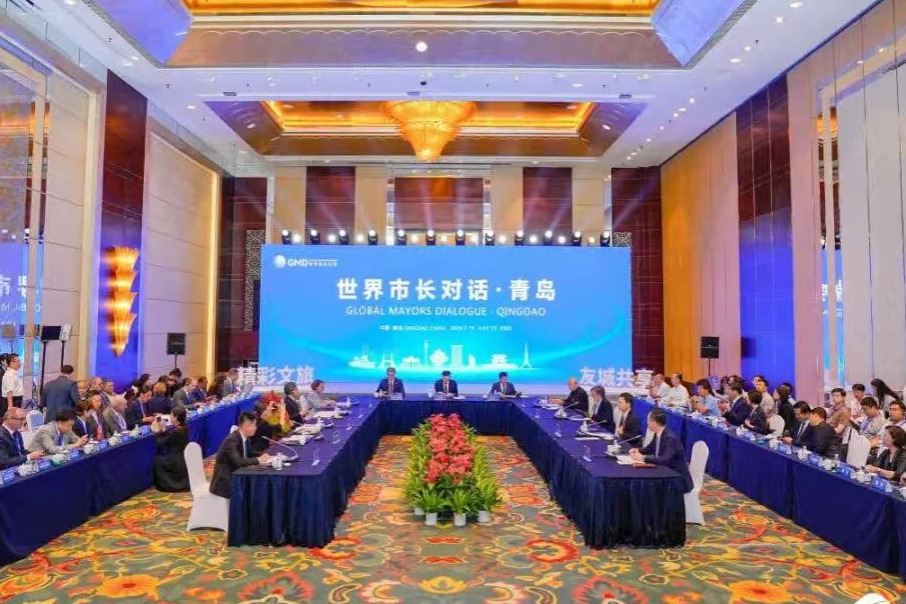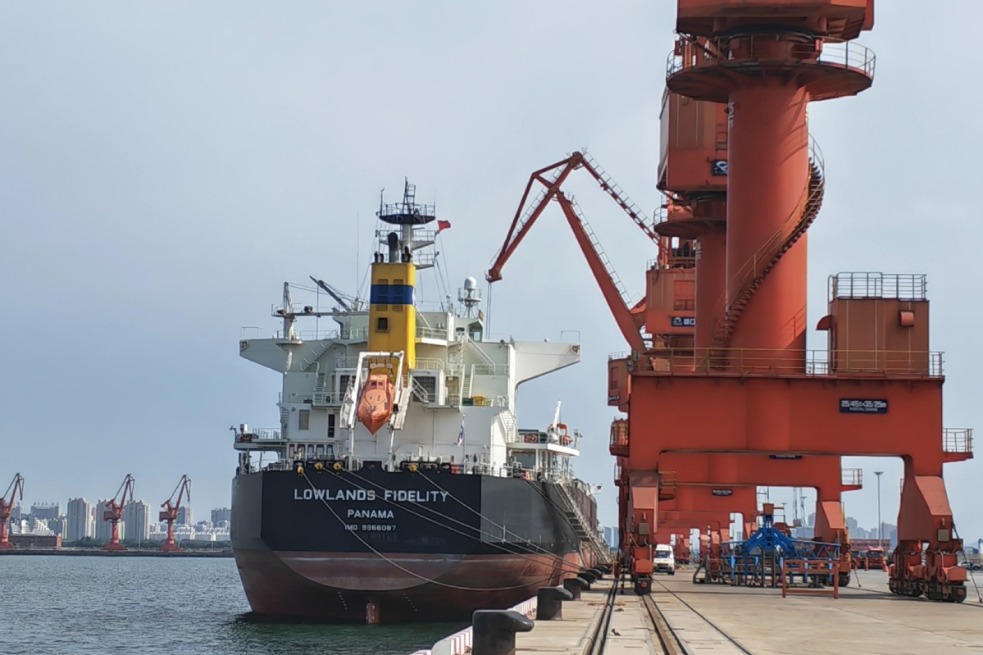Trade stalwart
Securing a breakthrough in the China-Japan-ROK Free Trade Agreement within this year has become a shared imperative


In recent years, the intensifying global geopolitical rivalry has created headwinds for the trilateral cooperation among China, Japan and the Republic of Korea.
According to data from Global Trade Flow Database, from 2021 to 2024, intra-regional trade among the three countries declined from approximately $850 billion to $737 billion, a decrease of 13.5 percent. Japan's trade with the ROK has declined significantly, representing a weak spot in regional cooperation. In 2024, Japan's trade with the ROK was around $77.9 billion, a 7.8 percent drop from 2021.
Reigniting and accelerating the negotiations on a trilateral free trade agreement among China, Japan and the ROK is not only a realistic choice for their own interests, but also a critical step in ensuring regional supply chain security.
At the 13th Trilateral Economic and Trade Ministers' Meeting held in March this year, the three parties reaffirmed their commitment to fostering "a free, open, fair, non-discriminatory, transparent, inclusive and predictable trade and investment environment", providing a stable outlook for future cooperation.
Since negotiations kicked off in 2012, the China-Japan-ROK FTA has undergone 16 rounds of talks without reaching a conclusion. But in the face of new global dynamics and emerging challenges, accelerating the establishment of a high-standard trilateral FTA has become imperative.
As the world's second, fourth and 13th largest economies, China, Japan and the ROK together accounted for about 24 percent of global GDP and around 40 percent of global manufacturing output in 2024. A China-Japan-ROK FTA will create a more resilient regional growth pole, and inject greater certainty into the global trading system. Research estimates suggest that the agreement could raise the GDP of the three countries by 0.4 to 1.1 percent.
China, Japan and the ROK represent the greatest strength in the Regional Comprehensive Economic Partnership cooperation. In terms of economic scale and industrial capacity, the three countries account for over 80 percent of the RCEP's total GDP and manufacturing value added. Their trilateral cooperation acts as a "ballast", playing a stabilizing role in regional production networks and shaping the trade architecture of the region.
At the same time, China, Japan and the ROK also represent a key weakness in RCEP regional economic cooperation. Although the RCEP has, for the first time, established a free trade arrangement among the three countries, their level of liberalization and rule-making in critical areas such as services and investment have lagged behind.
China, Japan and the ROK are playing a pivotal role in supporting the industrialization of the Association of Southeast Asian Nations by providing capital, technology and knowledge — thereby fostering a win-win model of regional cooperation and helping build ASEAN into a new "growth center".
China, Japan and the ROK could jointly expand market access and capacity-building efforts targeted at ASEAN. For example, the three countries can work together to increase the zero-tariff coverage on goods from ASEAN. At the same time, China, Japan and the ROK could collaborate to provide capacity-building, technical assistance and information-sharing initiatives to the least developed countries, enhancing the ability of ASEAN's small and medium-sized enterprises to effectively utilize the RCEP.
Breakthroughs in the trilateral free trade arrangements of China, Japan and the ROK will bring about an elevation of standards of the multilateral free trade arrangement of the RCEP. China has formally applied to join the Comprehensive and Progressive Agreement for Trans-Pacific Partnership while the ROK is currently considering accession. It is recommended that the China-Japan-ROK FTA negotiations prioritize emerging trade issues not yet fully addressed by the RCEP — such as the digital economy, green economy and high-standard rules on intellectual property rights, State-owned enterprises, government procurement, competition policy and transparency.
As the quality and standard of the China-Japan-ROK FTA improves, it could serve as "common ground" between the RCEP and the CPTPP, laying a practical and institutional foundation for convergence between the two agreements and contributing to the long-term vision of a Free Trade Area of the Asia-Pacific.
Over the next five to 10 years, China's economic transformation will unleash substantial market demand, offering immense growth opportunities for Northeast Asia.
In 2024, China imported goods worth $181.7 billion from the ROK and $156.2 billion from Japan, exceeding the US' amount of imports from the two countries by around 17.5 percent. In terms of sectors, China remains the largest export destination for Japanese and ROK semiconductor products.
In recent years, the service trade complementarity among China, Japan and the ROK has steadily increased. In particular, China's accelerated development and broader opening up of its service sector has created favorable conditions for trilateral cooperation in areas such as R&D, tourism and elderly care.
In 2024, China's service trade market exceeded $1 trillion for the first time, reaching $1.06 trillion, with imports accounting for approximately $610 billion. If the share of the service trade in trilateral trade rises to the global average, it could generate new market opportunities for the trade in services. To achieve this, the three countries may explore mutual recognition mechanisms for academic credentials, professional qualifications and licensing standards.
China, Japan and the ROK should form a joint force against the US-launched trade war by focusing on reducing tariffs on automobiles. China could progressively open its market to high-end manufactured goods from Japan and the ROK, such as auto parts, semiconductors and chemical materials under the RCEP framework. In the context of rising US tariffs on automobiles and steel, China's tariff reductions on Japanese and the ROK's automobiles will deepen industrial ties with these countries.
In sectors where China has large demand for Japanese and ROK services — such as healthcare, elderly care, environmental protection and cultural tourism — it is recommended to expand the import list for these services. China could enhance alignment with the service markets of Japan and the ROK in terms of regulatory frameworks, supervisory standards, management practices and mutual recognition. For example, easing restrictions on Hallyu's (Korean Wave) entry to China and encouraging the entry of friendly cultural contents will enable Japan and the ROK to better share China's rapidly growing entertainment and consumer markets.

The author is president of the China Institute for Reform and Development. The author contributed this article to China Watch, a think tank powered by China Daily.
Contact the editor at editor@chinawatch.cn.
































